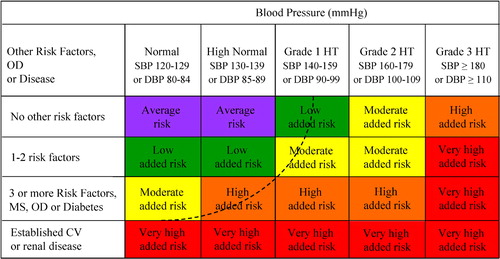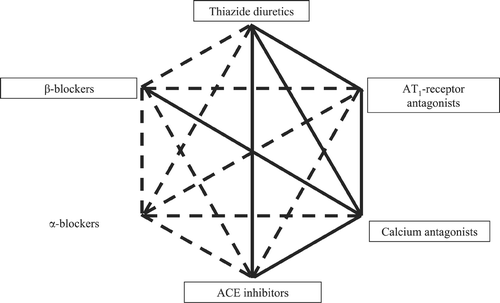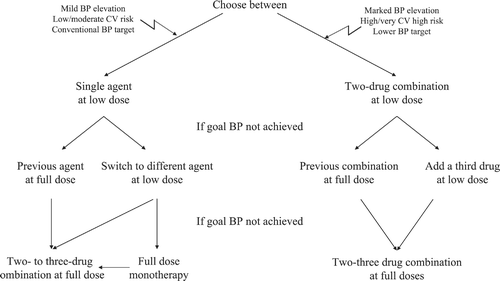Figures & data
Table 1. Definitions and classification of blood pressure (BP) levels (mmHg)
Figure 1. Stratification of CV Risk in four categories. SBP: systolic blood pressure; DBP: diastolic blood pressure; CV: cardiovascular; HT: hypertension. Low, moderate, high and very high risk refer to 10 year risk of a CV fatal or non‐fatal event. The term ‘added’ indicates that in all categories risk is greater than average. OD: subclinical organ damage; MS: metabolic syndrome. The dashed line indicates how definition of hypertension may be variable, depending on the level of total CV risk.

Table 2. Factors influencing prognosis
Table 3. High/Very high risk subjects
Table 4. Availability, prognostic value and cost of some markers of organ damage (scored from 0 to 4 pluses)
Table 5. Blood pressure thresholds (mmHg) for definition of hypertension with different types of measurement
Table 6. Conditions favouring use of some antihypertensive drugs versus others
Table 7. Compelling and possible contraindications to use of antihypertensive drugs
Figure 4. Possible combinations between some classes of antihypertensive drugs. The preferred combinations in the general hypertensive population are represented as thick lines. The frames indicate classes of agents proven to be beneficial in controlled intervention trials.

Table 8. Hypertensive Emergencies


